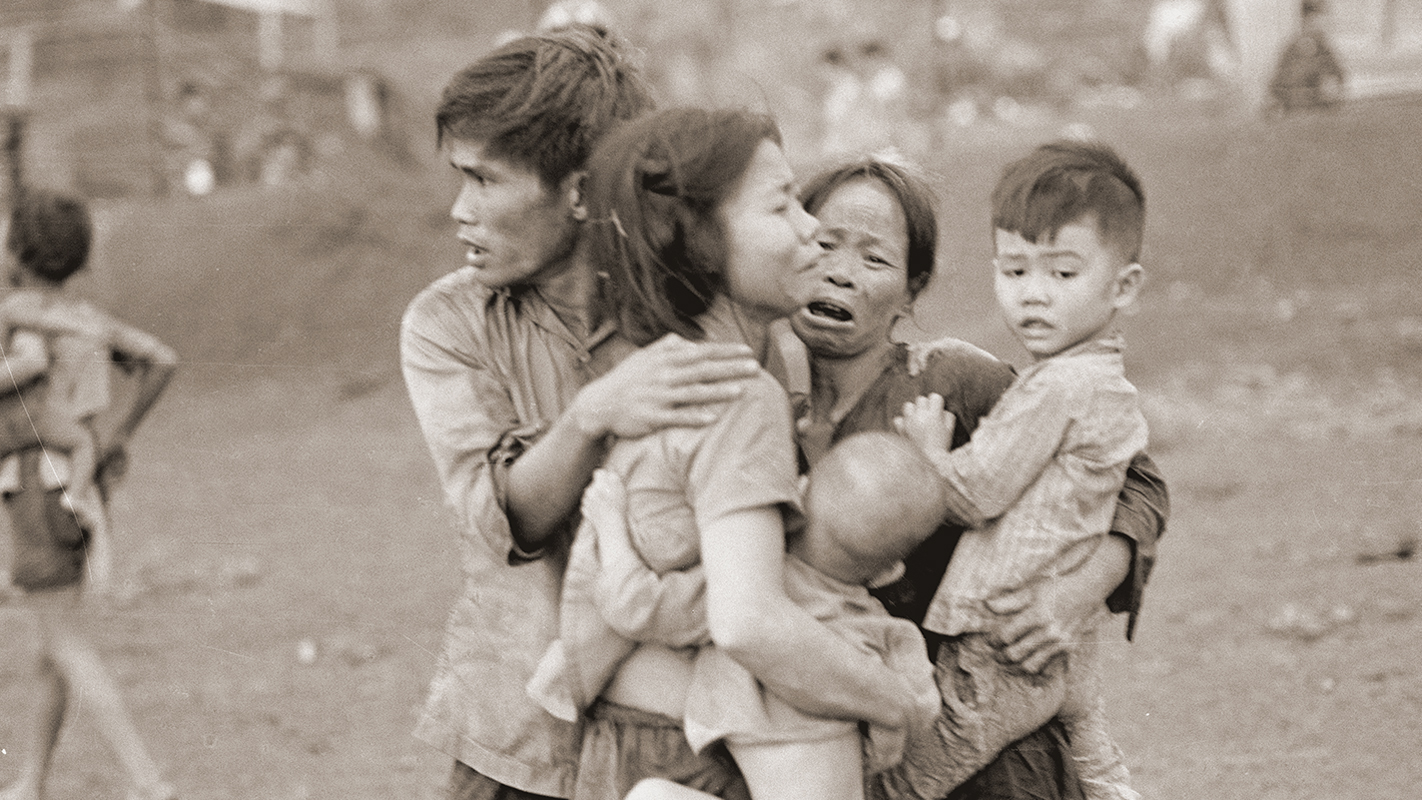ERA 9: Postwar United States (1945 to early 1970's)
My Lai, Thirty Years After, by Rachel Louise Snyder
Guiding Questions
Why is it important to hear multiple perspectives about an historical event? (My Lai)
Did the Vietnam War bring a domestic revolution in the United States?
When war atrocities occur, how do we charge responsibility to the individuals involved? To the country as a whole?
Question Focus Example for Task 24: As collateral damage is an unfortunate by-product of all wars, nations often have great difficulty confronting their pasts and assigning responsibility when dealing with war atrocities.

A scene from the Vietnam War
Teacher-to-Teacher
In order to answer the compelling questions in this collection, students should have a thorough understanding of who was involved in the Vietnam War, what the American homeland response was before and after My Lai, which presidents were in office, and what the government’s motives were for engagement and further involvement in the Vietnam Conflict. Students must be aware that the government did not fully disclose information to the public about the events in Vietnam which caused an extreme societal reaction once the My Lai Massacre was fully exposed in the media. Additionally, students should have an understanding of basic Southeast Asian geography (political, human, and physical). **There are some graphic descriptions and pictures included that illustrate the author’s position that only by confronting some of our nation’s dark moments can we truly move toward avoiding future events like My Lai. This might be a great collection to use during a modern unit on the war in Iraq. Students could compare and contrast soldier conditions, war atrocities, and/or public reaction to the conflict.
Literature Connection: The Things They Carried by Tim O’Brien, Fallen Angels by Walter Dean Meyers, Matterhorn: A Novel of the Vietnam War by Karl Marlantes, Four Hours in My Lai by Michael Bilton and Kevin Sim, Facing My Lai: Moving Beyond the Massacre edited by David L. Anderson

